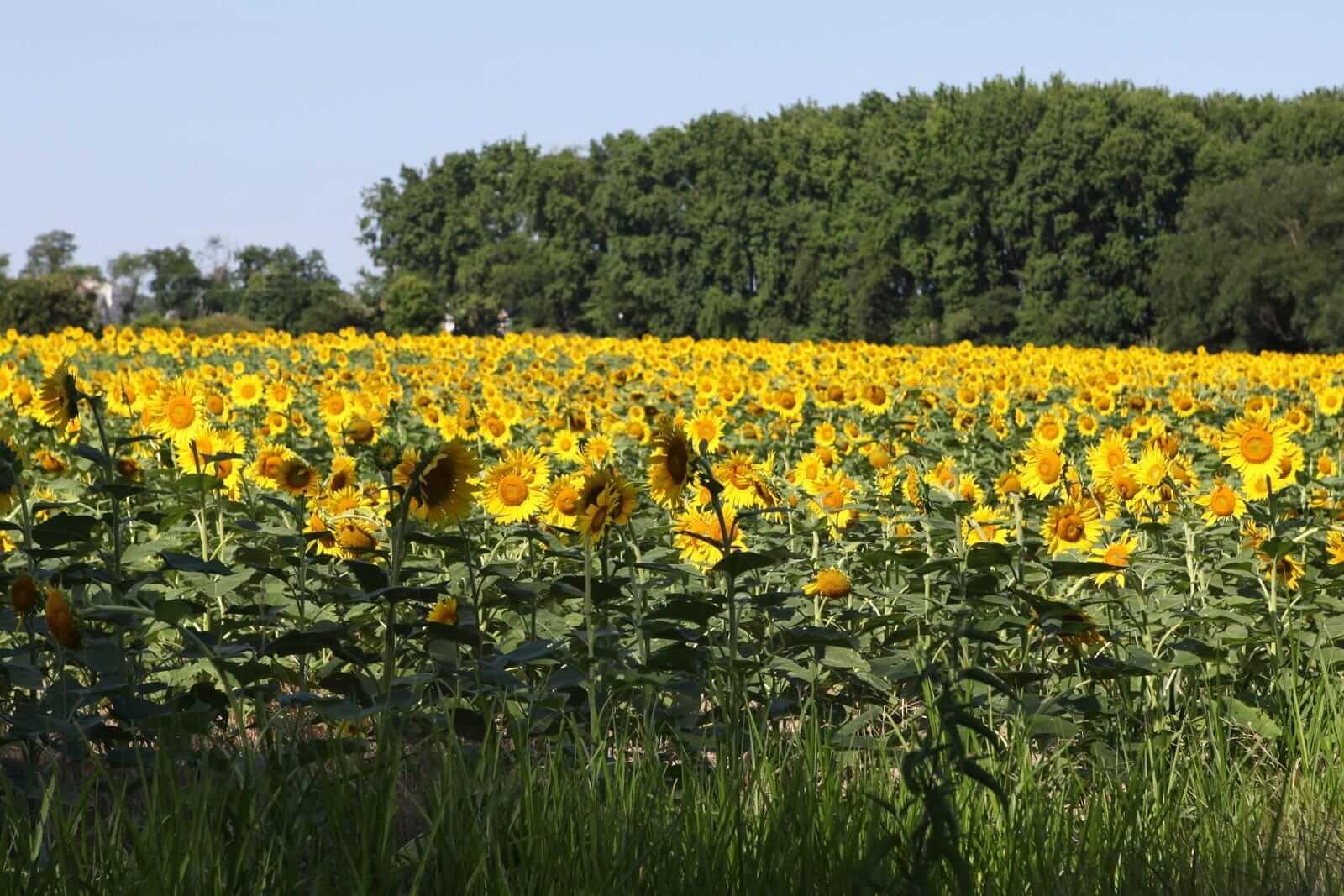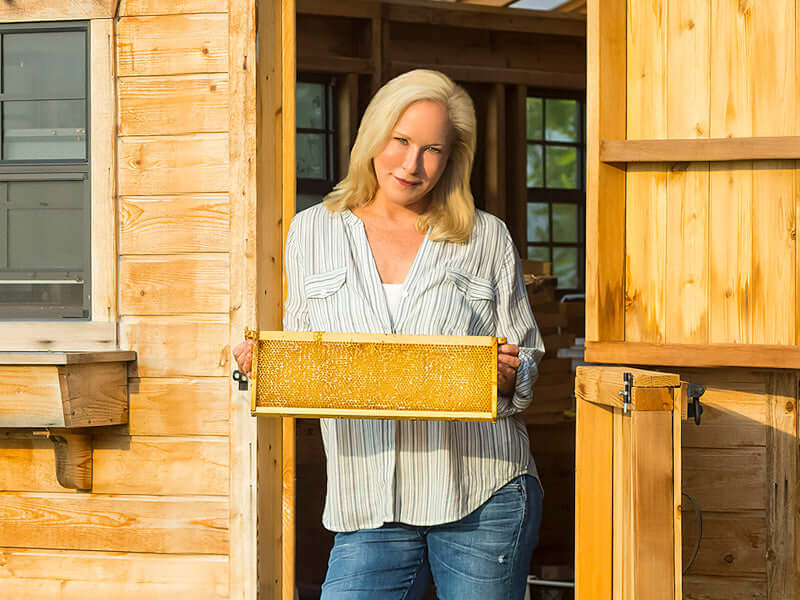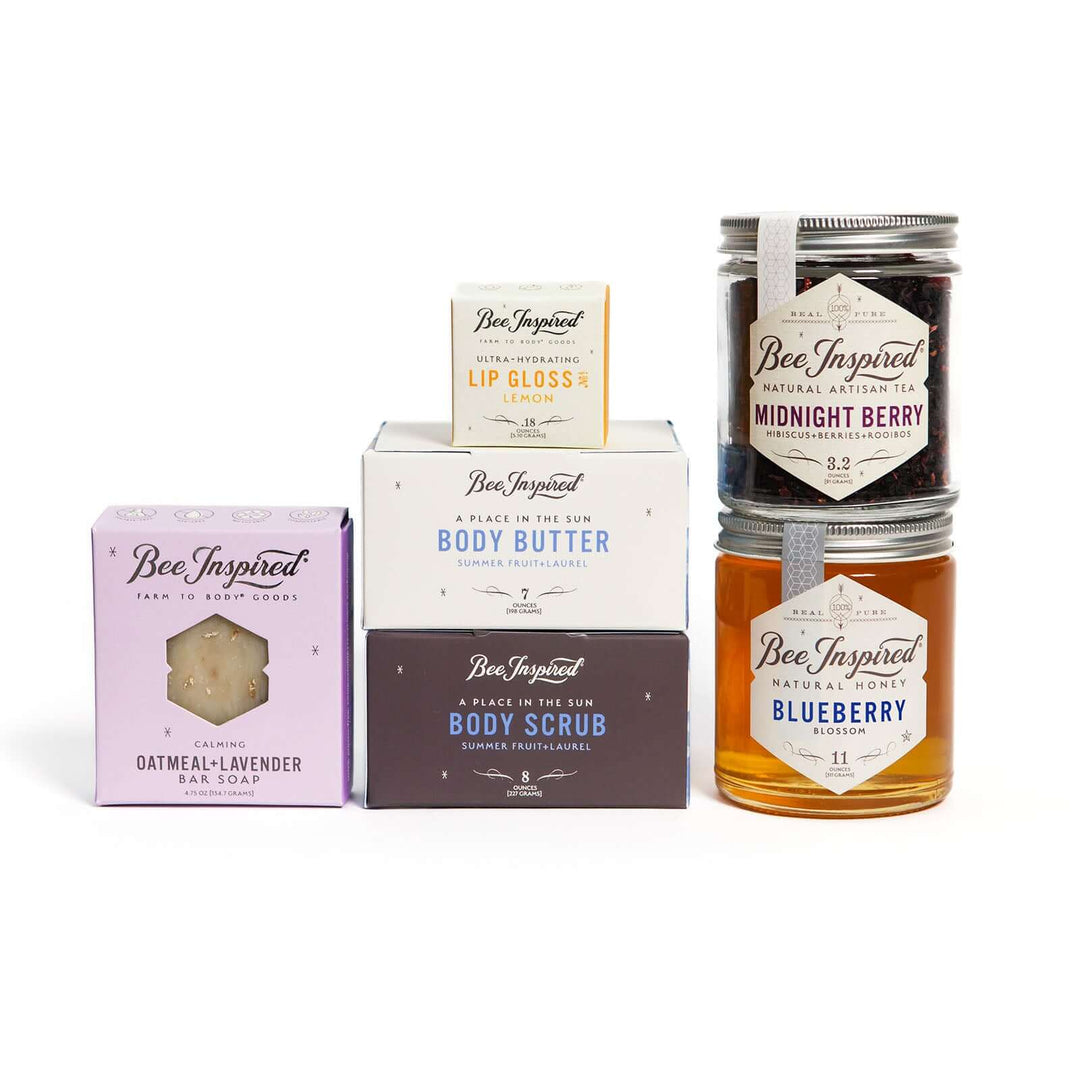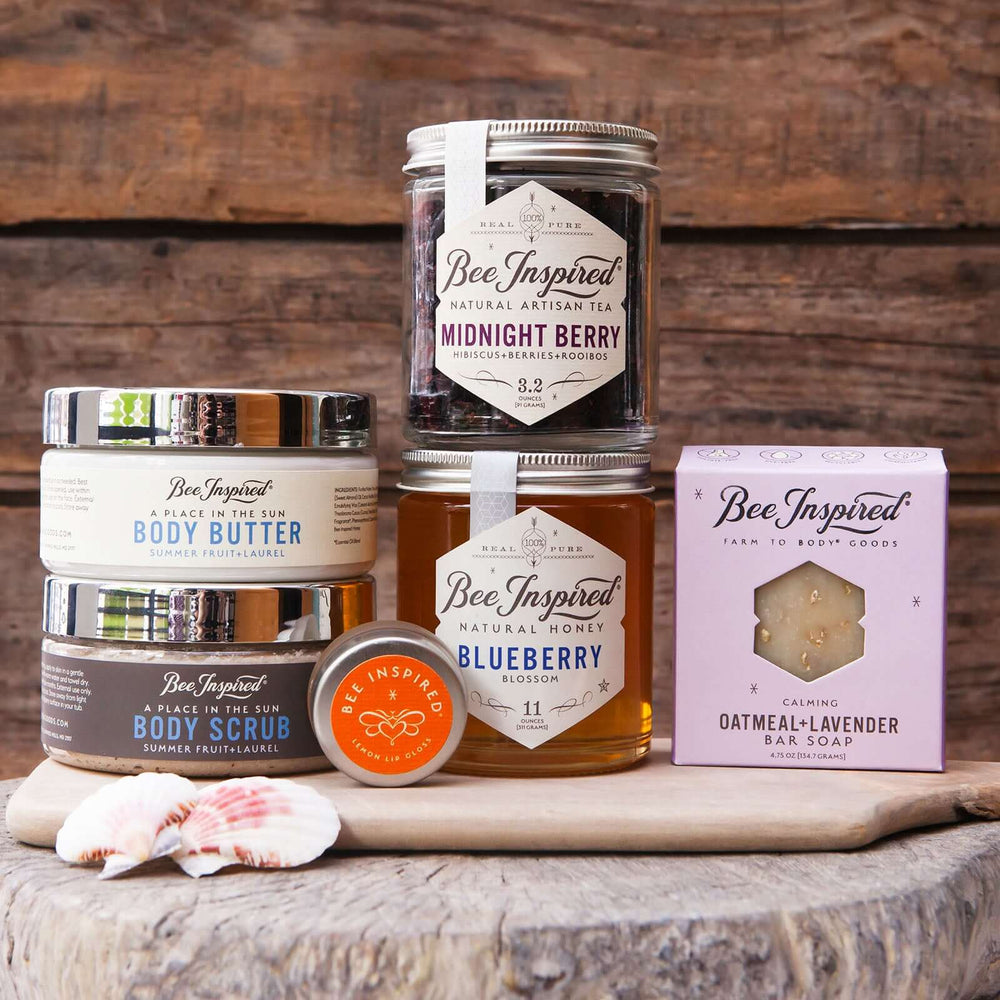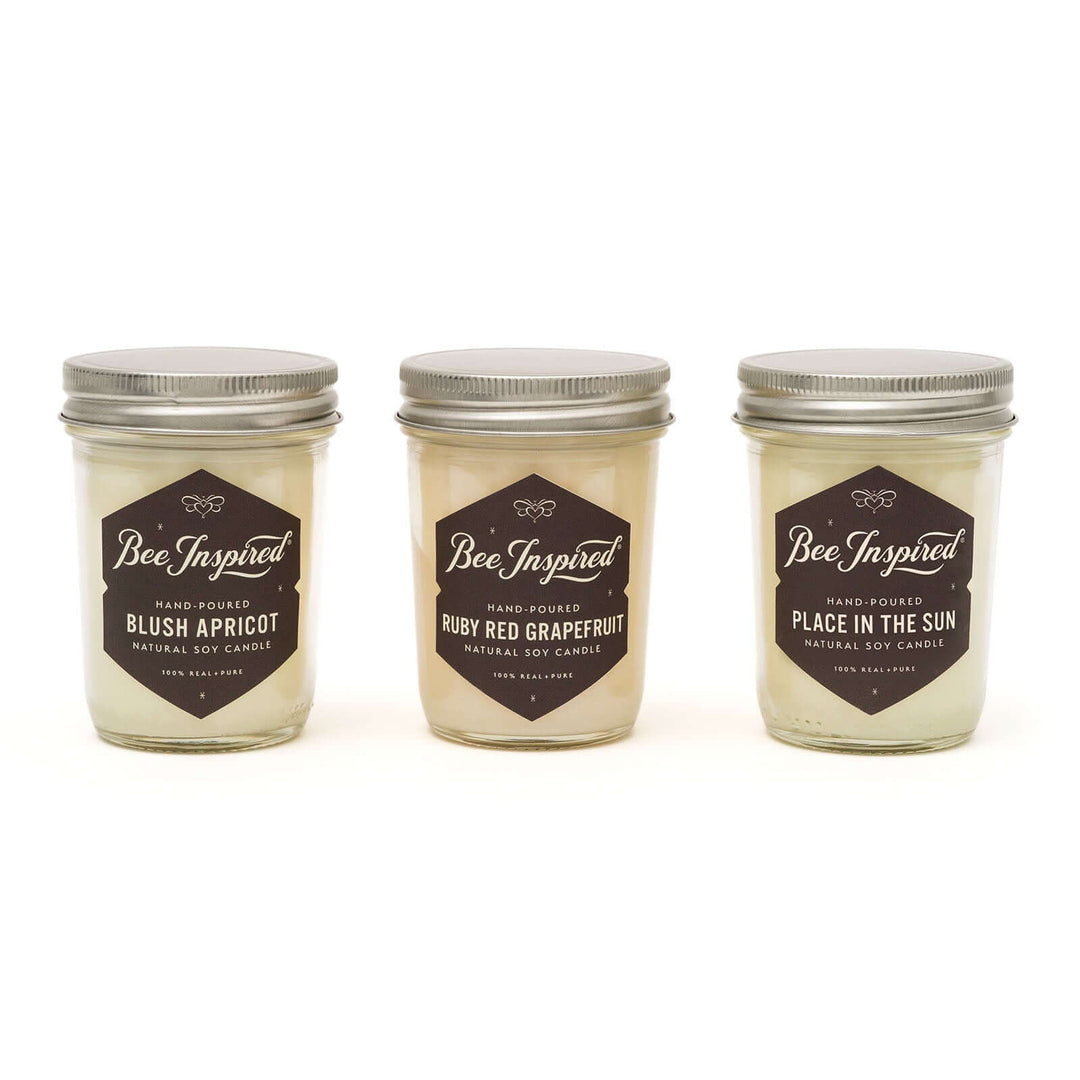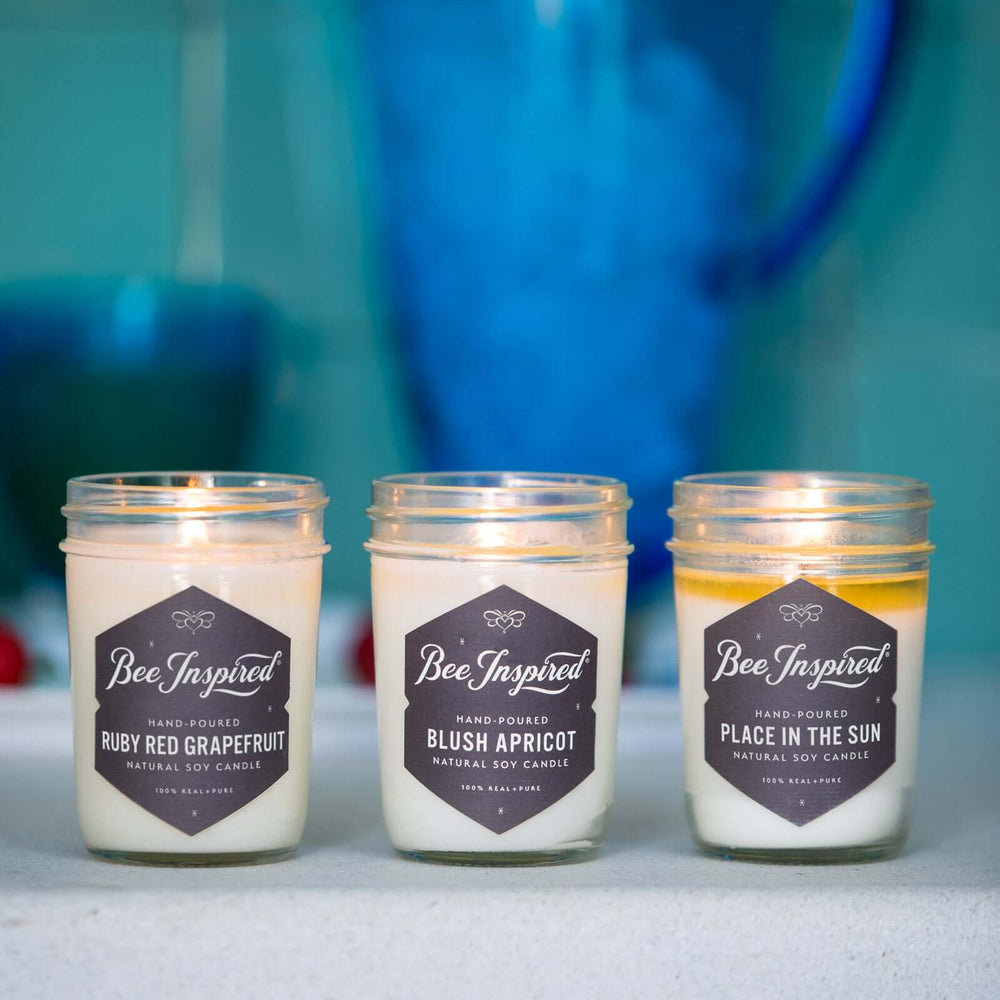Large-scale pollinator farming is fundamentally different from backyard gardening. When you're planning bee habitat across 25+ acres of agricultural land, you face unique challenges: equipment limitations, deer pressure, soil variability, and the economics of commercial-scale plantings.
Learn about our farm
After five years of managing over 40 acres of commercial pollinator habitat on our Maryland farm, we've learned that successful bee farming requires an agricultural approach—not just scaling up garden techniques.
If you're a farmer, landowner, or agricultural professional considering large-scale bee habitat integration, this guide covers the commercial realities we wish we'd understood before planting our first 25 acres.
Why Commercial-Scale Bee Farming?
The agricultural economics are compelling: Commercial farms that incorporate pollinator habitat see measurable yield improvements in surrounding crops. Studies show farms within 1,000 meters of diverse pollinator habitat achieve 20-30% higher yields on pollinator-dependent crops.
Unlike residential pollinator gardens that focus on supporting local biodiversity, commercial bee farming serves multiple agricultural objectives:
- Direct honey production revenue streams
- Enhanced pollination services for surrounding crops
- Soil health improvements through legume integration
- Cost-offset opportunities through agricultural incentive programs

Commercial-Scale Soil Management
Agricultural-Grade Soil Testing
Commercial pollinator farming requires industrial-level soil analysis. Unlike small garden beds, you're dealing with field-scale variability that affects equipment performance and plant establishment across dozens of acres.
Our commercial testing protocol:
- Grid sampling: Test every 2.5 acres separately
- Depth analysis: 0-6 inches and 6-12 inches for rooting zone data
- Comprehensive panels: N-P-K plus micronutrients, organic matter, CEC
- pH mapping: Field-scale pH variation affects large equipment lime application
Agricultural reality: A single 25-acre field might require three different soil amendment strategies. Budget $150-300 per field for comprehensive testing, but it prevents thousands in failed plantings.
Agricultural Plant Selection for Commercial Bee Operations
Commercial-Scale Honey Production Plants
Forget residential garden varieties—commercial bee farming requires plants that perform at agricultural scale. You need species that:
- Establish reliably across variable field conditions
- Produce significant nectar volumes per acre
- Withstand agricultural equipment traffic
- Provide economic returns through honey production
High-Volume Nectar Producers (Field-Scale Planting)
Commercial clover operations (our primary recommendation):
- White Sweet Clover (Melilotus alba): 200+ pounds honey per hive when planted in 10+ acre blocks
- Red Clover (Trifolium pratense): Reliable clover honey production, 150 pounds per hive
- Alsike Clover: Performs well in wet field areas where other clovers fail
Industrial sunflower production:
- Heirloom varieties: Order early from commercial suppliers like Johnny's Seeds
- Minimum planting: 5+ acre blocks for meaningful sunflower honey production
- Expected yield: 30-100 pounds honey per acre depending on variety and weather
Large-scale wildflower establishment:
- Native grass/forb mixes: Designed for no-till drill seeding
- Regional seed mixes: 15-20 species selected for your agricultural zone
- Establishment timeline: 2-3 years to full production, unlike immediate garden plantings

Spring Honey from our farm is one of our most popular varietals
Practical Planning Considerations
Successfully establishing commercial pollinator habitat requires addressing several practical challenges that don't exist in small-scale gardening. Equipment limitations, wildlife pressure, climate variability, and economic factors all play crucial roles in commercial success.
Large-Scale Deer Pressure
Agricultural-scale deer management differs completely from protecting small garden plots. When deer discover 25 acres of sunflowers, they can destroy entire commercial plantings overnight.
Commercial-scale solutions:
- Plant larger areas: 40+ acre blocks where deer can't consume everything
- Strategic field placement: Keep valuable crops away from wooded edges and deer corridors
- Decoy crops: Plant less valuable species along field edges to redirect deer pressure
- Economic planning: Budget for 20-30% deer loss in commercial projections
Different from garden approaches: Fencing 25+ acre fields isn't economically feasible. Success requires landscape-level planning and acceptance of some crop loss.

Commercial Equipment and Infrastructure Requirements
Agricultural Machinery Considerations
Residential garden techniques don't scale to commercial farming. You need equipment capable of handling 25+ acre plantings:
Seeding equipment requirements:
- No-till drill: For establishing perennial mixes without soil disturbance
- Broadcast seeder: For large-scale annual flower crops
- Calibration capabilities: Critical for expensive pollinator seed mixes
Maintenance equipment:
- Rotary mower: For maintaining established plantings and controlling weeds
- Sprayer (if needed): For organic-approved weed control in establishment phase
Agricultural reality: Most contract farmers won't work with non-GMO, no-spray pollinator crops. Budget for your own equipment or find specialized operators willing to work with sustainable practices.
Agricultural Economics and Scale Requirements
Commercial pollinator farming requires significant upfront investment:
- Seed costs: $200-500 per acre for quality pollinator mixes
- Soil preparation: $100-300 per acre for comprehensive amendments
- Equipment needs: $15,000-50,000 for basic seeding and maintenance equipment
- Establishment timeline: 2-3 years before full honey production from perennial plantings
Revenue potential:
- Honey production: $1,500-4,000 per hive annually with good floral resources
- Cover crop payments: $50 per acre through USDA programs
- Pollination services: Additional income potential for nearby crop producers

Working with Experts
The Value of Professional Consultation
Game-changing decision: Working with consulting ecologist Jeffrey Wolinski transformed our understanding of pollinator ecosystems. His expertise helped us identify the most productive native species for our region and understand plant family relationships.
What experts provide:
- Region-specific plant recommendations
- Understanding of bloom succession planning
- Knowledge of native vs. introduced species benefits
- Soil amendment strategies for optimal flower production
Investment worth making: Professional consultation prevents costly mistakes and accelerates success.
Getting Started: Your First Season Plan
Start Small, Think Big
Our recommendation: Begin with 5-10 acres of carefully planned pollinator habitat rather than attempting massive plantings without experience.
Year one priorities:
- Soil preparation and testing
- Plant 3-4 proven species rather than complex mixes
- Establish baseline monitoring of plant performance and bee visitation
- Document what works for your specific conditions
Seasonal Timing for Farm Planning
Fall preparation (September-November):
- Plant cover crops like oats (not wheat) to reduce spring weeds
- Add lime and other soil amendments before winter
- Plan next year's seed orders
Spring implementation (March-May):
- Plant cool-season flowers like sweet clover
- Prepare beds for warm-season crops
- Monitor early bloom success

Setting Expectations: What Success Looks Like
Realistic timelines: Most perennial pollinator plants take 2-3 years to reach full production. Annual crops provide immediate gratification but require yearly replanting.
Success indicators:
- Increased bee visitation throughout growing season
- Diverse pollinator species beyond honey bees
- Improved soil health from legume integration
- Honey production reflecting local floral sources
Next Steps: Implementation and Management
Once you've planned your commercial pollinator habitat, the real work begins. Implementation, ongoing management, and adapting to results requires different strategies and considerations.
Resources for Commercial Pollinator Habitat Development
Essential reading for agricultural-scale pollinator projects:
- Farming for Bees Guidelines for Providing Native Bee Habitat on Farms - Comprehensive guide to integrating pollinator habitat into agricultural operations
- Native Plants for Bee Forage - Research-based plant recommendations for commercial bee nutrition
- Plant Lists by Region - Regional plant selection guides for large-scale habitat projects
- Search for Wildflower Lists by Region - Native plant databases organized by geographic region
- National Resources Conservation Service Nectar Corridors - USDA guidance on pollinator habitat in agricultural landscapes
- Northern Nectar Sources for Honey Bees - Comprehensive reference for commercial honey production plants
Additional commercial planning resources:
- USDA NRCS Environmental Quality Incentives Program (EQIP) for pollinator habitat funding
- State agricultural extension services for region-specific commercial recommendations
- Professional ecological consultants for site-specific commercial habitat design
Support sustainable commercial pollinator farming through your purchases. Explore our locally sourced honey varieties and natural beeswax products created through large-scale pollinator-friendly farming practices.
Disclaimer: Commercial planning recommendations are based on our specific agricultural experience and should not be considered certified agricultural consultation. Always consult with local agricultural extension services and USDA NRCS for region-specific commercial guidance and available funding programs.





